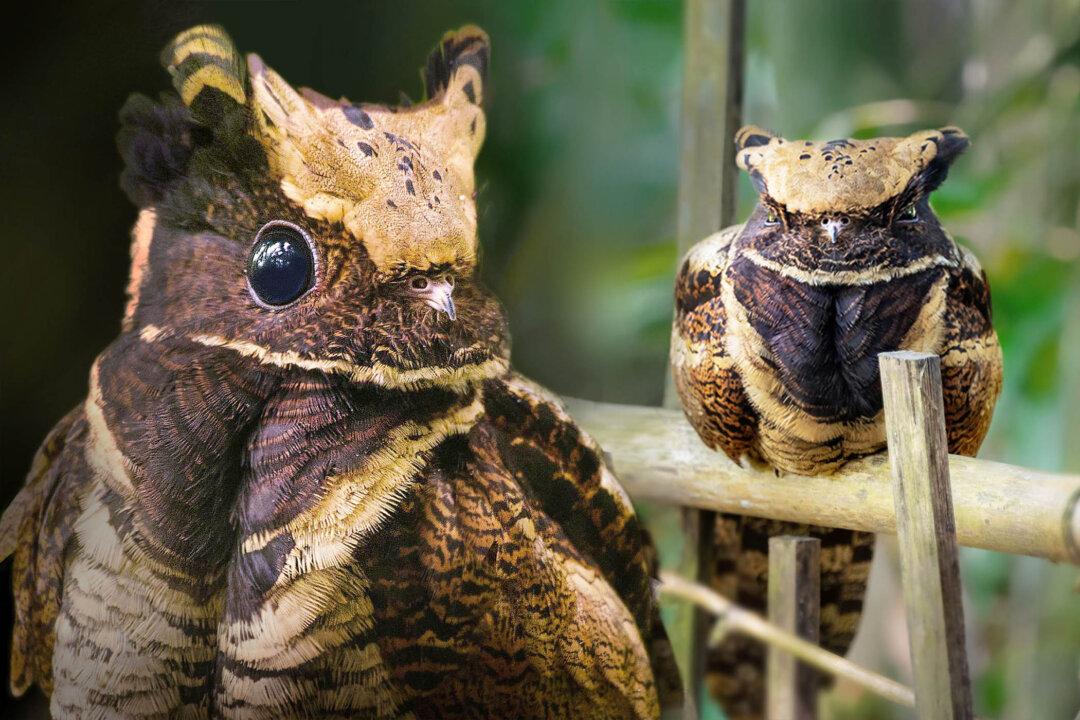They come out to hunt at night, nocturnal insects be warned! At dark, like little feathered dragons, the adorably bug-eyed great eared nightjar alights and, ever-so-adeptly, snatches flying insects on the wing, inhaling them with their disproportionately humongous mouths.
By day, these masterful mimics of their environment are nearly invisible. What is that, a bump on a log? A broken branch? A piece of tree bark? The disruptive patterns in the nightjar’s feathers—with endless shades of beige, brown, and grey—help to break up its shape, making the perfect camouflage.






